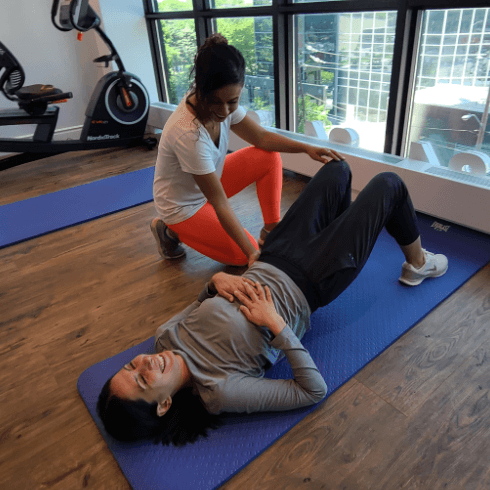“Urinary incontinence” is a technical term for involuntary leakage of urine. “Fecal incontinence” is a term used for involuntary leakage of stool. These conditions are way more common than what most people think, and can affect anyone at any age with any gender.
Incontinence may have different types, such as urgency (sudden urge to use the washroom and inability to hold), frequency (using the washroom more frequently than usual), stress incontinence (losing control with sneezing, coughing, laughing, or with daily or sport activities such as running) and mixed incontinence (two or more of the above mentioned conditions happening at the same time).
Fortunately, incontinence can be controlled and/or treated with the help of physiotherapy. If you have been struggling with urinary incontinence and you are looking for help, contact PhysioD today to schedule an appointment with our dedicated Toronto, ON physiotherapist.
Why am I experiencing incontinence?
There are several reasons why someone may leak urine or stool. Some short-term incontinence may develop and disappear on its own due to temporary conditions. Certain medications can even cause temporary control problems that should clear up after use. However, if your urinary or fecal incontinence persist, it may be due to a larger underlying condition, such as:
- Weak pelvic floor muscles
- Overactive pelvic floor muscles
- Pelvic organ prolapses
- Pelvic organ conditions (such as prostatitis)
- Post surgeries
In addition to the different ways in which urinary incontinence can be caused, there are also different types of incontinence that can occur. These different types of incontinence include:
- Stress incontinence. Stress incontinence is caused when one experiences a leak due to pressure on the bladder or rectum. For example, stress incontinence can occur when exercising, lifting heavy objects, laughing, coughing, or sneezing.
- Urge incontinence. Urge incontinence is caused when there is a sudden and emergent need to urinate. Someone experiencing urge incontinence may not have enough time to make it to the toilet before leakage occurs.
- Frequency incontinence and voiding dysfunction. This type of incontinence is caused when the pelvic floor is either too weak to hold onto a minimal amount of urine or stool, or is uncoordinated and thus dysfunctional in a way that the person has a hard time emptying the bladder or rectum fully (thus needs to use the washroom more frequently than usual). People with this type of incontinence may also experience urine dribbling or straining with bowel movements.
- Mixed incontinence. Sometimes a person may experience two or more types of incontinence at the same time.
If you are experiencing persistent incontinence that has been occurring for several weeks or months, contact our Toronto, ON physiotherapy office as soon as possible to seek help.
How will physiotherapy help with my incontinence?
When you arrive for your initial assessment, our physiotherapist will take your medical history and will ask about the specific details of what you experience. Our physiotherapist will then perform a physical examination that includes an internal (through vagina or rectum) palpation to determine the overall muscle tone and strength of your pelvic floor and surrounding tissues. Your physical exam, along with an evaluation of your medical history and discussion of your symptoms, will help in determining the best route for your treatment plan. Typical treatments for those struggling with incontinence include:
- Increasing strength, stability, and endurance of the core, lower back, abdominal, hip and pelvic floor muscles.
- Increasing synergy and pattern of muscle firing between the pelvic floor and core.
- Performing strengthening exercises in functional and dynamic positions.
- Improving posture/positions.
- Participating in an exercising/walking/mobility program.
- Participating in functional activities.
- Participating in a home exercise program and instruction.
If you are struggling with incontinence and are looking for help, contact us at PhysioD today to schedule an appointment. Our physiotherapist will get you started on the path toward control and relief.


